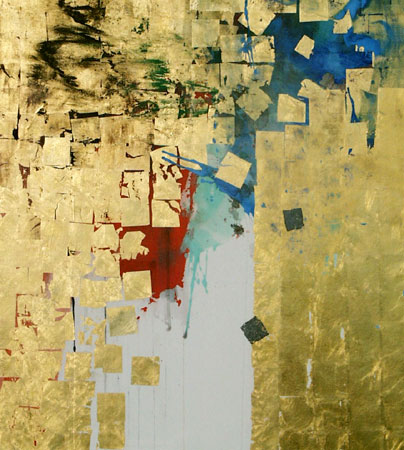 When I first read Eric Gorski's piece on evangelicals and art last week, I thought it was another home run for one of my favorite religion reporters. But I'm always praising Gorski -- and Stephanie Simon of the Los Angeles Times, among others -- and I thought it might be best to let the piece pass. But so many GetReligion readers -- from a wide religious spectrum -- have commented favorably on the article that I want to make sure we highlight it.
Gorski begins by telling the story of Makoto Fujimura, an abstract painter and elder in a Presbyterian Church in America congregation.
When I first read Eric Gorski's piece on evangelicals and art last week, I thought it was another home run for one of my favorite religion reporters. But I'm always praising Gorski -- and Stephanie Simon of the Los Angeles Times, among others -- and I thought it might be best to let the piece pass. But so many GetReligion readers -- from a wide religious spectrum -- have commented favorably on the article that I want to make sure we highlight it.
Gorski begins by telling the story of Makoto Fujimura, an abstract painter and elder in a Presbyterian Church in America congregation.
There are no crosses in Makoto Fujimura's paintings. No images of Jesus gazing into the distance, or serene scenes of churches in a snow-cloaked wood.
. . . After the 2001 terrorist strikes on the World Trade Center, three blocks from Fujimura's home, his work explored the power of fire to both destroy and purify, themes drawn from the Christian Gospels and Dante's "The Divine Comedy."
"I am a Christian," says Fujimura, 46, who founded the nonprofit International Arts Movement to help bridge the gap between the religious and art communities. "I am also an artist and creative, and what I do is driven by my faith experience.
"But I am also a human being living in the 21st century, struggling with a lot of brokenness _ my own, as well as the world's. I don't want to use the term 'Christian' to shield me away from the suffering or evil that I see, or to escape in some nice ghetto where everyone thinks the same."
By making a name for himself in the secular art world, Fujimura has become a role model for creatively wired evangelicals. They believe that their churches have forsaken the visual arts for too long -- and that a renaissance has begun.
The story makes the case that Fujimura is part of a larger movement: galleries in churches, seminaries opening centers devoted to the arts and films being made by graduates from evangelical film schools. He speaks with observers of culture and Christianity and compares the new movement with Christian artistic efforts from the past. Rather than aping the culture as much of contemporary Christian music does or selling accessible but artistically unimaginative paintings like, well, Thomas Kinkade, the new movement is about making good art first and foremost, the story contends.
The story is not terribly long but does get some important details -- and history! -- into the piece. Gorski notes that some evangelicals are uncomfortable with abstraction:
"The Bible is full of abstraction," said Fujimura, an elder at a Greenwich Village church he helped start. "Think about this God who created the universe, the heavens and the earth from nothing. In order to have faith you have to reach out to something, to a mystery."
It isn't always an easy sell.
Evangelical unease with the visual arts dates to the Protestant Reformation of the 16th century. Andy Crouch, editorial director for Christianity Today's Christian Vision Project, which examines how evangelicals intersect with the broader culture, notes that Protestantism traces its origins to an era when noses were snapped off sculptures in a rejection of Catholic visual tradition while the word of God was elevated.
Attitudes began to change in the 1960s and 1970s, when Christian theologian Francis Schaeffer and Dutch art historian Hans Rookmaaker challenged believers to emerge from their cocoons and engage the culture, including in the arts.
Just a great piece overall. One of the things that makes being a reporter in this day and age so interesting is that sources can also publish their interactions with reporters. One of the people Gorski interviewed for his article mentioned their conversation back in June. He says that Gorski was asking about an arts conference he'd learned about weeks before when he was attending the Southern Baptist Convention's annual meeting.
The Austin blogger/arts pastor David Taylor says the conversation was good and lasted for 40 minutes. And what's interesting is that he doesn't show up in the article at all. Or, rather, he isn't quoted in the article. Their discussion seems to have helped shape -- in some capacity or another -- Gorski's well-rounded study of a very broad trend.
Image is Makoto Fujimura's Golden Summer.
